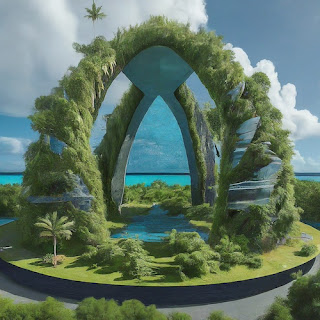Anti-Atlas Aquaponic Farms for Morocco

The Anti-Atlas Aquaponic Farms: A Sustainable Oasis Blooms in Morocco Nestled within the rugged Anti-Atlas Mountains of Morocco lies a beacon of innovation: The Anti-Atlas Aquaponic Farms. Here, a futuristic vision of agriculture takes root, merging fish farming with hydroponics to create a closed-loop system that thrives in a challenging climate. This marvel not only offers a sustainable source of protein and fresh produce but also boasts a range of potential health benefits and fosters a deeper connection with nature. A Sustainable Future for Food Production: Water Conservation: The closed-loop system dramatically minimises water usage by recycling nutrient-rich fish water to nourish hydroponically grown plants. This is a game-changer in a region often plagued by drought. Reduced Environmental Impact: Eliminating the need for traditional fertilisers and minimising land use make aquaponics a sustainable and environmentally responsible practice. Year-Round Production: Climate-...

%20.jpeg%20:ath29.jpeg)


